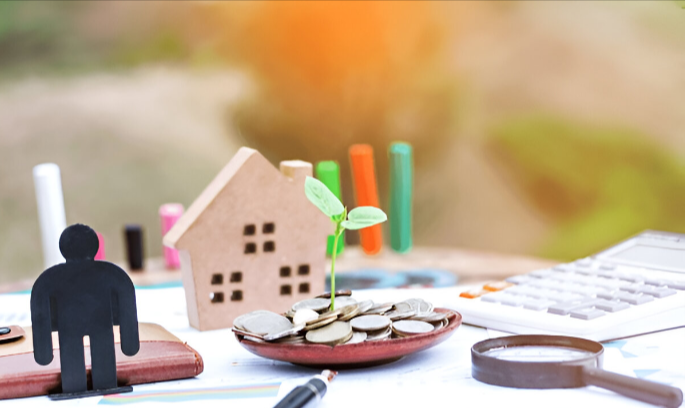Canadians are no strangers to fluctuating energy costs. Between hot summers and long, cold winters, our homes demand a lot of energy to stay comfortable. But with careful planning and some budget-friendly strategies, you can significantly reduce your utility bills without sacrificing comfort.
This guide explores practical ways to improve your home’s energy efficiency in Canada, keeping your wallet happy and minimising your environmental impact.
Behavioural Changes: Small Steps, Big Impact
The easiest and most cost-effective way to save energy starts with your daily habits. Here are some simple adjustments that can make a big difference:
- Embrace Natural Light: Make the most of daylight by opening curtains and blinds during the day. This reduces reliance on artificial lighting, especially during peak hours.
- Unplug Unused Electronics: Electronics in standby mode continue to consume energy. Get into the habit of unplugging chargers, TVs, computers, and other appliances when not in use. Consider using power bars with on/off switches for added convenience.
- Shorter Showers: Long, hot showers are a luxury we can sometimes cut back on. Aim for shorter showers and adjust the water temperature to a comfortable level.
- Air Dry Laundry: Whenever possible, skip the dryer and air-dry your laundry. This saves significant energy, especially during the summer months.
- Cook Strategically: Utilise the right size pots and pans for your burners. Cover pots and pans while cooking to retain heat and cook food more efficiently.
- Adjust the Thermostat: A small adjustment in your thermostat settings can make a big difference. In the winter, try lowering the thermostat by a degree or two during the day and more significantly at night. In the summer, raise the thermostat by a degree or two.
- Embrace Ceiling Fans: Ceiling fans can help circulate cool air in the summer, creating a more comfortable feel without relying solely on air conditioning.
Low-Cost Hacks for Big Savings
Several low-cost or no-cost strategies can further enhance your home’s energy efficiency:
- Seal Air Leaks: Draughty windows and doors are a major source of energy loss. Inspect windows and doors for gaps and cracks, and seal them using caulk or weather stripping. This simple fix can significantly improve your home’s comfort and energy efficiency.
- Change Air Filters Regularly: Dirty air filters restrict airflow and force your furnace or air conditioner to work harder. Replace air filters according to the manufacturer’s recommendations, typically once a month.
- Clean Lighting Fixtures: Dust buildup on light fixtures can reduce light output. Regularly clean your light fixtures for optimal light distribution and minimise the need for additional lamps.
- Upgrade to LED Bulbs: Replace traditional incandescent bulbs with LED bulbs. LEDs are significantly more energy-efficient and last much longer, saving you money on both energy bills and bulb replacements in the long run.
- Wash Clothes in Cold Water: Most laundry detergents work effectively in cold water. Opting for cold water washes can significantly reduce the energy needed to heat water for laundry cycles.
- Take Advantage of Natural Ventilation: Open windows whenever possible to allow for natural ventilation, especially during cooler mornings and evenings. This reduces reliance on air conditioning.
Smart Investments for Long-Term Savings
While some initial investment is required, certain upgrades can lead to substantial long-term savings on your energy bills:
- Energy Star Certified Appliances: When replacing appliances, choose Energy Star certified models. These appliances meet strict energy efficiency standards, saving you money on energy consumption over their lifespan.
- Smart Power Strips: Invest in smart power strips that automatically cut power to electronics when not in use. This eliminates phantom energy drain from devices in standby mode.
- Programmable Thermostat: A programmable thermostat allows you to set different temperatures for different times of the day and night. This ensures you’re not heating or cooling an empty house, leading to significant energy savings.
- Low-Flow Showerheads and Faucets: Installing low-flow showerheads and faucets reduces water usage, which translates to lower energy costs for heating water.
Government Rebates and Incentives
Many Canadian provinces and territories offer rebates and incentives for energy-efficient upgrades. These programs can help offset the initial cost of upgrades like insulation, new windows, and high-efficiency appliances. Research programs available in your region to see if you qualify for financial assistance.
Final Thoughts
Energy efficiency is an ongoing process, but even small changes can make a significant difference in your utility bills and environmental impact. By adopting these Canadian-friendly strategies, you can create a more comfortable and energy-efficient home without breaking the bank. Remember, consistency is key – the more you integrate these practices into your daily routine, the greater the benefits you’ll reap.
Going Green Beyond Energy Efficiency
- Embrace Renewable Energy: Explore options for installing solar panels or wind turbines (depending on your location) to generate your own clean energy.
- Water Conservation: Implement water-saving practices throughout your home, such as taking shorter showers, fixing leaky faucets, and watering your lawn only when necessary.
- Sustainable Products: Choose eco-friendly cleaning products and opt for appliances made with recycled materials whenever possible.
Reducing Your Environmental Footprint
The choices we make regarding the products we bring into our homes can significantly impact our overall environmental footprint. Here are some ways to embrace sustainability within your Canadian home:
Eco-Friendly Cleaning Products:
- Natural Ingredients: Look for cleaning products formulated with plant-based or naturally derived ingredients. These are often gentler on surfaces and less harmful to the environment compared to harsh chemicals.
- Concentrated Formulas: Opt for concentrated cleaning products. This reduces packaging waste and allows you to dilute the product with water for each use.
- Minimalist Cleaning Kit: Avoid having a multitude of cleaning products for various surfaces. Many eco-friendly brands offer multi-purpose cleaners that can tackle a variety of cleaning tasks, reducing the need for multiple products.
- DIY Cleaning Solutions: Consider making your own cleaning solutions with ingredients like vinegar, baking soda, and lemon juice. These natural alternatives are effective, inexpensive, and avoid harsh chemicals altogether.
- Biodegradable Packaging: Choose cleaning products with recyclable or biodegradable packaging whenever possible. Look for companies committed to sustainable packaging practices.
Appliances Made with Recycled Materials:
- Research Before You Buy: When purchasing new appliances, research brands that prioritise sustainability. Look for appliances made with a high percentage of recycled materials.
- Energy Star Certified Appliances: As mentioned earlier, Energy Star certified appliances are not only energy-efficient but are often manufactured with a focus on sustainability.
- Durable and Repairable: Invest in appliances known for their durability and repairability. This reduces the need for frequent replacements and minimises electronic waste.
- Consider Second-Hand Options: Explore buying gently used appliances from reputable second-hand stores or online marketplaces. This extends the lifespan of existing appliances and reduces demand for new ones.
Additional Sustainable Practices:
- Reduce, Reuse, Recycle: Apply the principles of reduce, reuse, and recycle throughout your home. Avoid unnecessary purchases, repurpose items whenever possible, and diligently recycle paper, plastic, and other materials.
- Sustainable Cleaning Tools: Opt for reusable cleaning cloths and sponges instead of disposable ones. Consider using microfiber cloths, which are highly effective and can be washed and reused multiple times.
- Sustainable Laundry Practices: Wash clothes in cold water whenever possible and opt for eco-friendly laundry detergents. Utilise clotheslines for air drying whenever weather permits.
The Power of Informed Choices
By making informed choices about the products you bring into your home, you can significantly reduce your environmental impact. Sustainable practices often go hand-in-hand with energy efficiency. By embracing eco-friendly cleaning products, appliances made with recycled materials, and other sustainable practices, you’re creating a more environmentally responsible home environment. Remember, small changes collectively have a significant impact. Start making sustainable choices today and contribute to a greener future for all!
Conclusion
By making small changes in your daily habits and investing in energy-efficient upgrades, you can significantly reduce your home’s environmental impact. Remember, every bit counts! By taking a proactive approach to energy efficiency, you’re not just saving money on your utility bills; you’re contributing to a greener future for generations to come.









